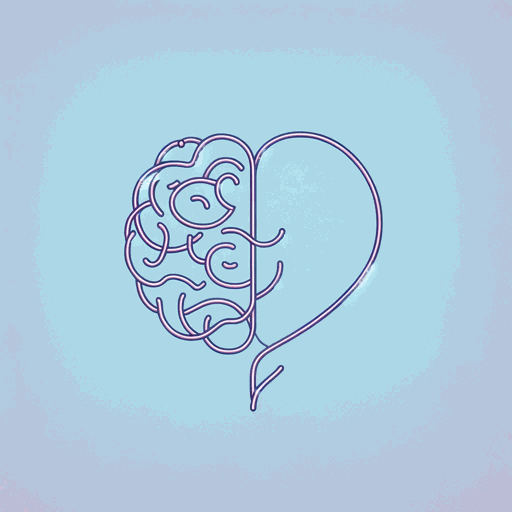47 pages • 1 hour read
Jamil ZakiThe War for Kindness: Building Empathy in a Fractured World
Nonfiction | Book | Adult | Published in 2019A modern alternative to SparkNotes and CliffsNotes, SuperSummary offers high-quality Study Guides with detailed chapter summaries and analysis of major themes, characters, and more.
Summary and Study Guide
Overview
In his book The War for Kindness (2019), Jamil Zaki works to upend assumptions about human nature and humans’ inability to develop empathy. A psychologist and empathy researcher, Zaki examines studies from psychology (including some from his own lab), the narrative arts, current events, and modern pop culture references to document both obstacles to empathy as well as strategies for building empathy. He vehemently rejects the idea that humans must give up empathy to save our future. Instead, he argues that only by choosing empathy can people build a kinder world. The War for Kindness is a call to action by Zaki to accept this challenge.
This guide refers to the Penguin Random House edition (2019).
Content Warning: The War for Kindness includes brief mentions of anti-gay violence, antisemitism, and infant death.
Plot Summary
Jamil Zaki begins The War for Kindness by rebuffing the “fixity” of human nature (Introduction and Chapter 1). For centuries, researchers and scientists believed that human nature, including empathy, was a fixed or unchanging trait—which Zaki calls the Roddenberry hypothesis in honor of his favorite show Star Trek. Research, including his own, has invalidated this perspective. People are born with a genetic predisposition toward weaker or stronger empathy, but all humans can grow or suppress this skill. Thus, both nature and nurture impact empathy.
One of the main obstacles to empathy is the mismatch between humans’ evolutionary environment and our modern world. The modern world with its cities, lack of in-person connection, and isolation contrasts with the small, close-knit communities in which humans evolved. An unprecedented number of people exist today, yet Zaki notes that there are fewer connections between them. Rituals that once brought people together, such as team sports, grocery shopping, and places of worship, have fallen to the wayside in favor of solitary pursuits. Many of these individual activities now take place on the internet. This lack of in-person connection makes caring about others more difficult.
There is a constant tug-of-war in the mind between the forces that pull us toward isolation and violence and those that push us toward empathy (Chapter 2). Nudges can help push people toward increased levels of empathy. The challenge becomes ensuring that these nudges lead to a long-term rather than a short-term strengthening of empathy.
From Chapter 3 onward, Zaki examines strategies that lead to more empathetic behavior. In Chapters 3-4, he looks at strategies for helping people view themselves differently. Former hate group member Tony McAleer works to pull hate group members out of the situation he was once in (Chapter 3). Through his organization Life After Hate, he and his colleagues work to first show genuine compassion to hate group members. Doing so helps hate group members see themselves in a different, less destructive light. Many harbor deep shame, which causes some of their anger and violence. Showing compassion helps break through this shame. Coaxing out a hate group member’s compassion also makes them more receptive to life outside such groups.
Zaki asserts that daydreaming (or untethering) is one of the most important things the brain does (Chapter 4). The same parts of the brain that are active when a person daydreams also control empathy. Zaki believes that fictional characters in plays, books, and radios shows are one of the best ways to help people better understand real-world outsiders. Theater training has been shown to increase a person’s empathy; avid readers better understand emotions compared to those who read less; and radio shows, such as Musekeweya (or New Dawn), can help conflict survivors feel more receptive to reconciliation talks.
Zaki also documents how too much empathy within groups can be harmful. In Chapter 5, he focuses on the adverse effects of superhero-level of empathy on healthcare workers. One of the challenges that this profession faces is balancing empathetic distress and empathetic concern. The former is when healthcare workers take on the emotions of their patients; the latter is when they feel for their patients. For the health of themselves and their patients, healthcare workers should always lean more toward empathetic concern. Research is currently trying to better understand how effective strategies such as peer-to-peer networks and meditation are in preventing burnout.
Chapter 6 focuses on the warrior mentality in police training. This perspective results in police officers having more empathy for each other than the community members they should be protecting. In this case, Zaki suggests that police officers work on decreasing their in-group empathy. Only by doing so will they be able to reestablish trust with communities. Zaki also touches on zero-tolerance policies in this chapter. People in power, primarily teachers, need to take ownership of the perspectives they bring within their classroom.
Zaki turns to the harmful impact of the internet in Chapter 7. He spends time demonstrating how the internet brings out the worst in humans by exacerbating all barriers to empathy, such as tribalism, isolation, etc. One of the primary reasons for this is anonymity. Without in-person interaction, it becomes difficult to regulate people’s behavior. Behavior that once would have been socially risky, like being aggressive, is commonplace on the internet. Yet, Zaki illustrates how there are technologies, such as virtual reality technology, the Autism Glass, and Koko, that are helping humans develop empathy in profound ways.
Creating a kinder world is an urgent, moral imperative for Zaki (Epilogue). If people choose isolation and violence, they are not just destroying their own lives but the future of humankind. Zaki is hopeful that readers will answer his call to action. He shows throughout his book that people already have plenty of tools at their disposal to choose empathy.

